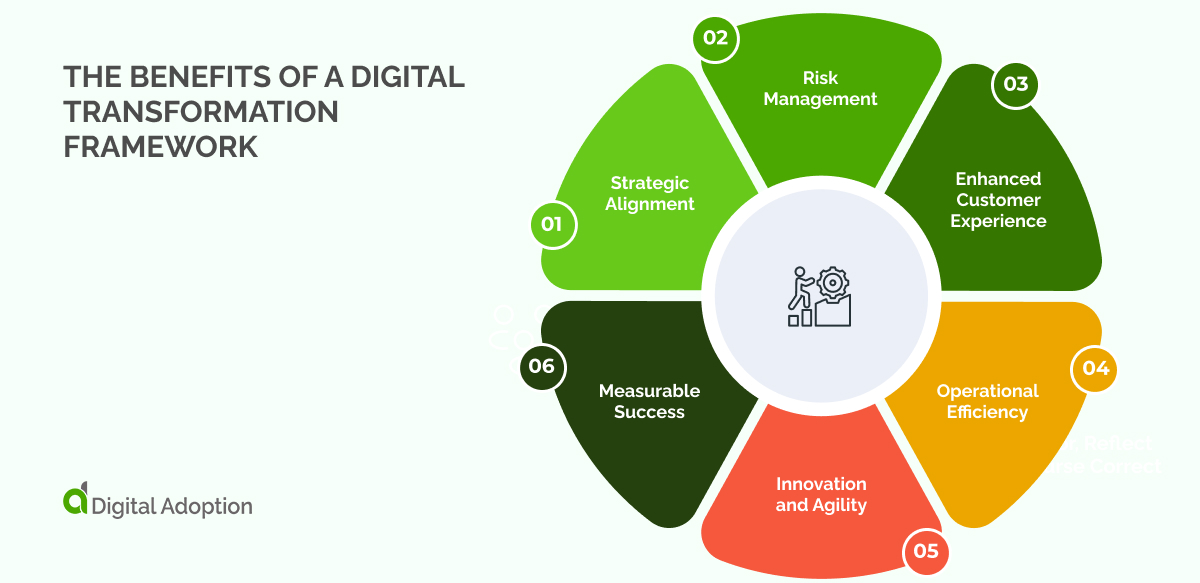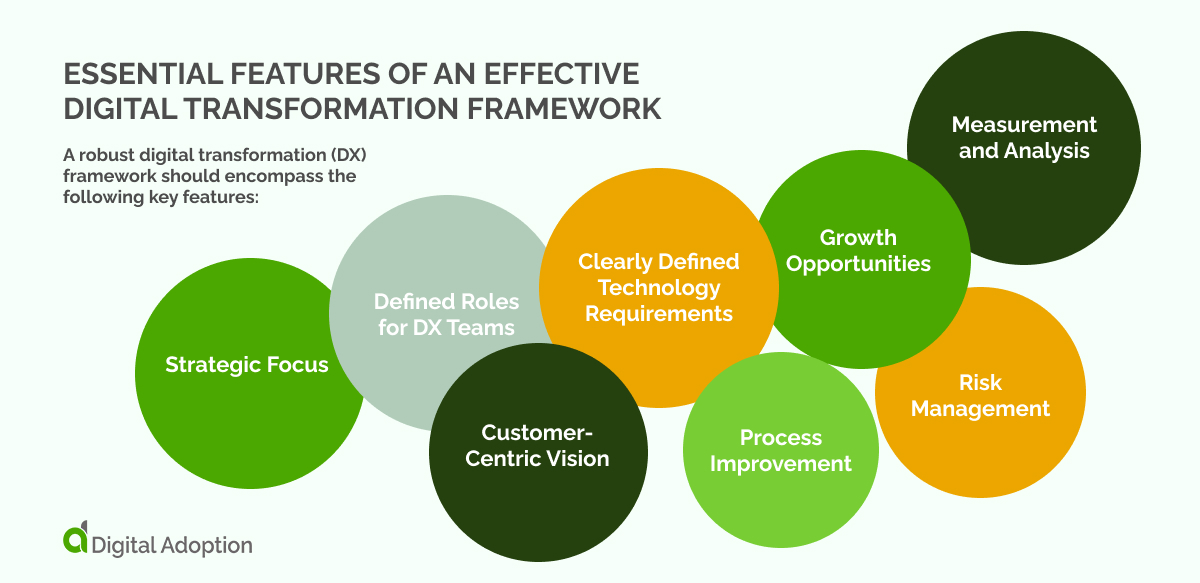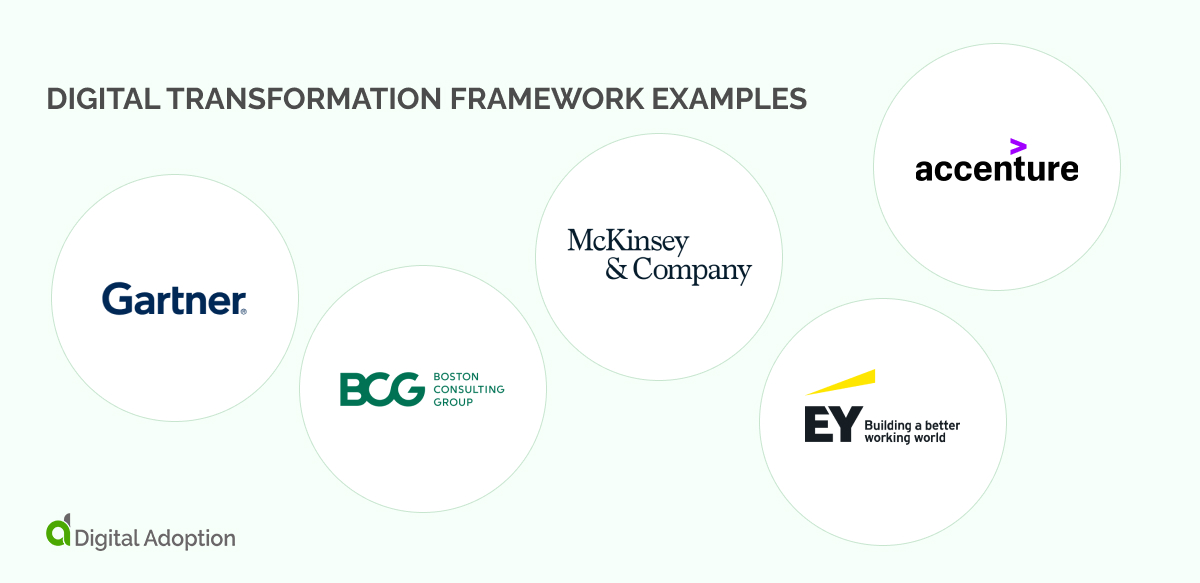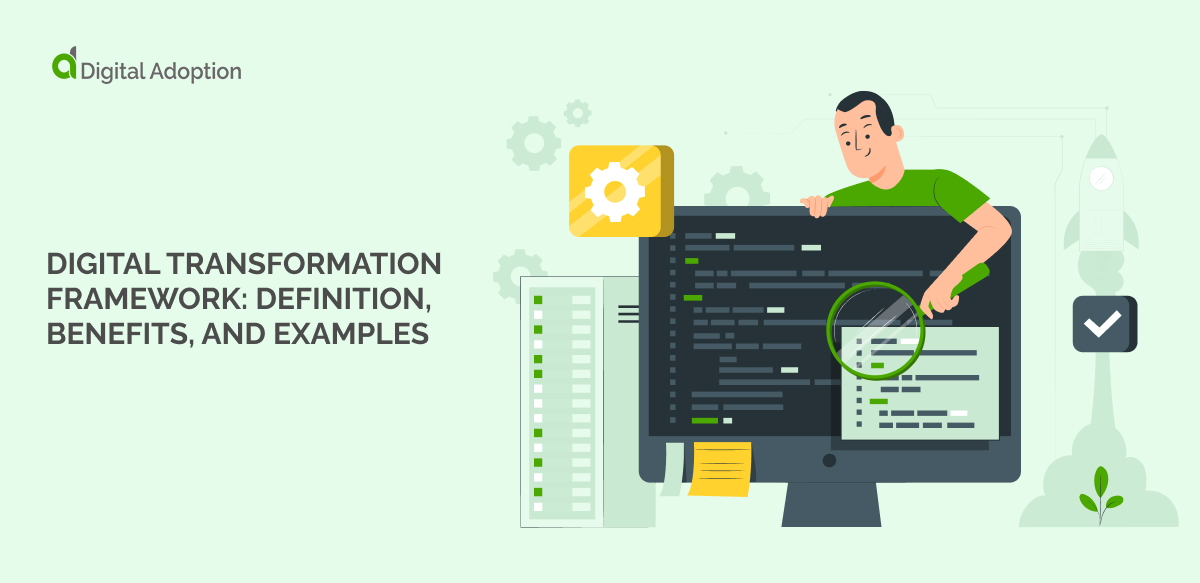The digital transformation (DX) currently emanating across business spheres ensures that change is the only constant.
The digital disruption spurred on by the emergence of new and novel tech promises to reinvigorate business-critical processes and accelerate the digital capabilities of organizations across industries.
Navigating the dynamic nature of digital transformations, however, is easier said than done— and we need to look no further than to the infamous McKinsey statistic to confirm this, which reveals 70% of transformations fail.
Be it disparate technology investments that reap little digital transformation ROI, a lack of top-down leadership and organizational vision, or poor change management processes—these deficits are all indicators of a business ill-equipped to embrace innovation.
As such, organizations must develop future-ready methods and strategies that help inform digital decision-making and capture prospective value within the digital arena.
A digital transformation framework works partly to fulfill this need, serving as a blueprint or a system of rules that guides businesses through the landscape of digital transformation. It provides structure and a roadmap to support the implementation of the digital transformation strategy.
In this article, we’ll be discussing the digital transformation framework. We’ll start by defining what it is and how it functions before exploring its importance in today’s digital age. You’ll learn about the key benefits of a robust framework and its essential features and gain insight from successful real-world examples.
Finally, we’ll guide you in selecting the most suitable framework for your organization, ensuring a smooth and beneficial digital transformation journey.
Those who need to cut through the noise and extract the most relevant information can find an outline of the article contents below:
- Digital Transformation Framework: What Is It and How Does It Work?
- The Importance of a Digital Transformation Framework
- The Key Benefits of a Strong Digital Transformation Framework
- Essential Features of an Effective Digital Transformation Framework
- Digital Transformation Framework Examples
- How to Select the Right Digital Transformation Framework for Your Organization
- Digital Transformation framework: What is it and how does it work?
- The importance of a digital transformation framework
- The benefits of a digital transformation framework
- Essential features of an effective digital transformation framework
- Digital transformation framework examples
- How to select the right digital transformation framework for your organization
- Digital transformation framework: final thoughts
Digital Transformation framework: What is it and how does it work?
A digital transformation framework is a meticulously designed structure that guides organizations through their digital transformation journey. It acts as a roadmap, systematically leveraging digital technologies to fundamentally alter existing or create new business processes, culture, and customer experiences.
For those needing a reminder—digital transformation is the process of integrating digital technologies into all areas of a business. This fundamental shift changes how organizations operate and deliver value to customers. Digital transformations also involve a cultural change that requires organizations to continually challenge the status quo, experiment, and be comfortable with failure.
Alongside formulating a digital transformation strategy, it’s crucial to establish a digital transformation framework. This framework plays an essential role by initially evaluating the organization’s current level of digital maturity. This involves understanding the existing technological infrastructure, business models, and overall digital readiness. It identifies the desired future state and sets clear, actionable steps to achieve this transition.
Digital transformation frameworks equip business and IT decision-makers with systematic and reliable procedures. These are generally data-driven, as opposed to the outdated, less precise management frameworks traditionally used.
These frameworks help maintain focus on critical elements such as operational efficiency, brand reputation, and industry trends. They prevent distractions from the promises of new technologies, ensuring that these key business objectives remain at the forefront.
The importance of a digital transformation framework
The criticality of a digital transformation framework lies in its ability to provide a structured pathway for businesses navigating the complexities of the digital world.
A well-defined digital transformation framework should be about integrating new technologies and redefining the business model and culture.
With a solid framework, businesses may be able to understand where to start their digital transformation or how to proceed. They may invest heavily in trending technologies without considering whether these align with their business objectives and customer needs.
A digital transformation framework helps organizations avoid such pitfalls. It ensures that every step taken is strategic, purposeful, and adds value to the business. It clarifies what needs to change, why it needs to change, and how to implement it effectively.
Moreover, it helps manage the inherent risks and challenges of digital transformation. By setting clear objectives, defining key performance indicators (KPIs), and establishing a process for regular monitoring and evaluation, the framework ensures that the transformation journey is controlled and measurable.
In a nutshell, the importance of a digital transformation framework stems from its role as a catalyst for organized, strategic, and successful digital evolution.
The benefits of a digital transformation framework

A robust digital transformation framework brings multiple advantages to an organization. Here are some key benefits:
- Strategic Alignment: A well-structured framework ensures all digital initiatives align with the organization’s strategic goals. This alignment prevents the waste of resources on irrelevant technologies and ensures every investment contributes to the overall business objectives.
- Risk Management: Digital transformation involves a degree of risk, whether adopting new technologies or changing established processes. A strong framework helps identify potential risks early and devise strategies to mitigate them, ensuring smoother, more successful transformations.
- Enhanced Customer Experience: By focusing on digital technologies that directly enhance customer interactions, a digital transformation framework can help improve customer satisfaction and loyalty by focusing on digital technologies that directly strengthen customer interactions.
- Operational Efficiency: Digital transformation often involves streamlining processes and eliminating inefficiencies. A well-planned framework aids in identifying areas where digital tools can automate tasks, reduce errors, and increase productivity.
- Innovation and Agility: A solid framework fosters a culture of innovation and agility. It encourages organizations to experiment with new technologies, stay ahead of industry trends, and quickly adapt to market or customer behavior changes.
- Measurable Success: A key aspect of any digital transformation framework is the ability to track and measure success. By defining clear KPIs and metrics, businesses can assess the effectiveness of their digital initiatives and make data-driven decisions.
Essential features of an effective digital transformation framework

A robust digital transformation (DX) framework should encompass the following key features:
- Strategic Focus: The framework should be grounded in the organization’s strategic objectives, ensuring that all digital initiatives support these goals.
- Defined Roles for DX Teams: Defined roles and responsibilities for digital transformation teams are essential. This feature ensures accountability and facilitates effective collaboration across various functions.
- Clearly Defined Technology Requirements: Any DX framework must outline the technical requirements to achieve the transformation goals. This includes identifying the right digital tools, platforms, and systems that align with the business objectives.
- Process Improvement: An effective DX framework should focus on improving business processes through digital technologies. This might include automating manual tasks, enhancing data analytics capabilities, or streamlining communication channels.
- Customer-Centric Vision: A successful digital transformation is customer-focused. The framework should prioritize initiatives that enhance customer experiences, meet evolving customer expectations, and drive customer value.
- Growth Opportunities: The framework should identify and leverage opportunities for business growth brought about by digital transformation. This could involve exploring new markets, developing innovative products or services, or enhancing existing offerings.
- Risk Management: Identifying potential risks and devising strategies to mitigate them is another crucial feature of a DX framework. This helps ensure a smooth and successful transformation journey.
- Measurement and Analysis: Lastly, the framework should define key performance indicators (KPIs) and metrics to measure the success of digital transformation initiatives. Regular analysis of these metrics enables continuous improvement and informed decision-making.
Digital transformation framework examples

Navigating transformation requires a strategic approach and proven methodologies. The following introduces several distinguished frameworks from industry-leading consulting firms that can help guide organizations on this journey.
Each model offers unique insights and strategies, shedding light on various aspects of digital transformation, from leadership and strategy to technology integration and cultural change.
Let’s delve into these insightful approaches shaping the course of digital transformation across industries.
1. Gartner’s Six Key Steps to Build a Successful Digital Business
Beginning with Gartner’s Six Key Steps, we see that the success of digital transformation hinges upon fostering a shared understanding and establishing the right leadership. Gartner’s framework underscores the need to craft a clear strategy and roadmap, set measurable success metrics, and ensure organizational commitment.
2. Boston Consulting Group (BCG)
Moving on to the Boston Consulting Group (BCG) approach, it’s clear that becoming a ‘Bionic Company’ requires integrating technology into all business facets. BCG emphasizes formulating a customer-centric strategy, exploiting advanced technologies like AI and machine learning, and cultivating a culture that values agility, innovation, and adaptability.
3. Accenture
Transitioning to Accenture’s holistic framework, we find a focus on strategy, innovation, digital customer experience, digital operations, and workforce. Accenture also emphasizes technology architecture, cybersecurity, and effective change management, painting a comprehensive picture of digital transformation.
4. McKinsey
With McKinsey’s 4Ds of digital transformation model, the journey begins with discovering opportunities and designing solutions. The solutions are then delivered through agile methodologies, and risks are mitigated through continuous testing and iteration, forming a robust cycle of digital transformation.
Finally, we arrive at Ernst & Young (EY), where digital transformation involves setting a clear vision and strategy, redesigning customer experiences, leveraging data analytics, and adopting new technologies. EY underscores effective change management and aligning digital capabilities with strategic goals.
Each of these frameworks offers a unique perspective on digital transformation, but all highlight the importance of a clear strategy, customer focus, advanced technologies, and a culture ready for change.
How to select the right digital transformation framework for your organization

Selecting the right digital transformation (DX) framework for your organization is a strategic decision that plays a critical role in determining the success of your digital transformation journey.
It’s a process that begins by clearly identifying your business objectives and digital transformation goals. Whether you’re aiming to enhance the customer experience, improve operational efficiency, or unlock new market opportunities, understanding these goals will guide you toward a framework that best aligns with your objectives.
The next step involves a comprehensive assessment of your organization’s current digital maturity level. By evaluating your existing technology infrastructure, processes, skills, and culture, you can identify gaps that need to be addressed. This evaluation helps ensure that the chosen framework effectively bridges these gaps and propels you toward your digital transformation goals.
Equally important is taking into account your organizational culture. The DX framework needs to resonate with the values and ethos of your organization. For instance, a flexible and iterative DX framework would likely be a good fit if your organization thrives on agility and innovation.
At this point, it’s crucial to delve into the details of different DX frameworks. Each comes with its unique strengths and focus areas – some are more technology-centric, while others prioritize aspects such as customer experience or process optimization. You can identify potential fits by evaluating these frameworks against your goals, current state, and organizational culture.
In this process, don’t hesitate to seek expert advice. Consulting with digital transformation experts or experienced peers in your industry can provide valuable insights and guidance. Their experiences can help you avoid common pitfalls and make an informed decision.
Remember, the digital ecosphere is dynamic, and so are business needs. Therefore, the chosen framework should offer scalability and flexibility. It should allow your organization to adapt as your digital maturity grows and as market conditions change.
Lastly, consider piloting the selected framework on a small scale before a full-scale rollout. This strategy allows you to test its effectiveness, make necessary adjustments, and ensure that it’s indeed the right fit for your organization.
Digital transformation framework: final thoughts
The rapid rate at which technology and customer expectations are evolving should be firmly comprehended by business and other executive decision-makers.
For future-ready businesses – whose success is intrinsically intertwined with these developing areas, it only emphasizes the need for an effective digital transformation framework.
Where change is break-neck and often unplanned, these frameworks deliver much-needed structural assurance to any initiative. This assurance stems from the systematic nature of the framework, which details the processes, methodologies, and steps to be taken during the transformation.
To wrap up—selecting the right DX framework is a thoughtful and strategic process that requires careful planning and consideration.
When done right, it ensures that no aspect of the transformation is overlooked. From technology adoption and process optimization to cultural change and capability building, DX frameworks inform these ambitions and serve as another step toward true transformation.













